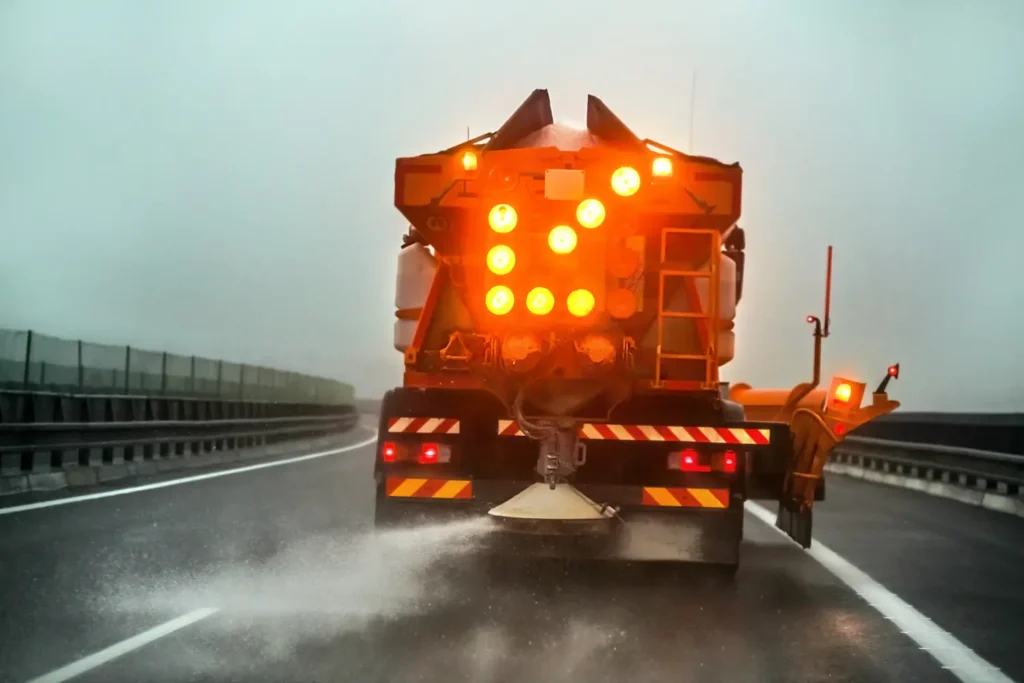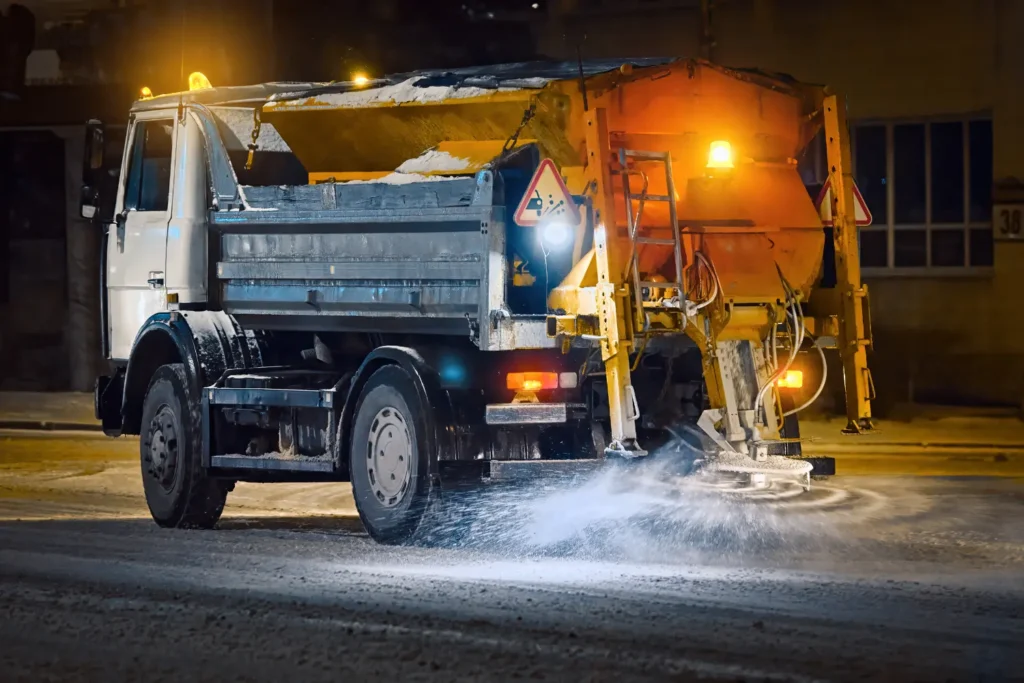There’s no doubt that gritting and salting the roads of the United Kingdom is a vital part of preparing for the winter months.
Highway England stores 280,000 tonnes of gritting salt alone, and an estimated 2 million tonnes are used to grit the UK’s road each year – without which the economy would lose around £2 Billion each year.
But keeping roads safe and the country running isn’t the UK’s only concern.
How we look after our environment affects how we look after ourselves, and unfortunately, the phrase “salting the earth” exists for a reason.
Too much salt sinking into the soil can prevent trees, plants, and crops from growing, and the more salt we use to grit our roads, the higher the risk of this material getting accidentally spread into nearby environmental areas.
This is where eco-friendly gritting comes in.
What is Eco-Friendly Gritting?
Eco-friendly gritting is precisely what it says on the tin: a combination of different methods and materials that together help grit roads while reducing any harmful effects on the environment compared to traditional rock salt gritting.
Since pure rock salt is the primary cause of environmental damage, using different materials is the number one solution to make gritting more eco-friendly.
Here are some of the most common eco-friendly gritting substitutes:
- Brine Solution: This saltwater mixture has the same effect as pure rock salt – lowering the freezing temperature of water – but with a much lower salt concentration.
- Sand and Gravel: Though these materials don’t lower water’s freezing point, they can be used alongside traditional grit to provide higher traction on the road, reducing the amount of salt needed.
- Calcium Magnesium Acetate (CMA): Made from limestone and acetic acid, this material is salt-free and just as effective at melting ice on the roads.
- Potassium Acetate: Often used at airports, this entirely biodegradable de-icer is much less corrosive and environmentally damaging than ordinary rock salt.
- Molasses Mixture: Using this sugar beet by-product mixed with salt not only makes the salt more effective at lower temperatures, it also reduces how much salt is needed on the roads
Along with new materials, technological advancements are also helping transform gritting into a more eco-friendly industry.
GPS-guided gritters combined with AI-powered analysis of road conditions allow gritting materials to be deployed more accurately and efficiently, reducing the amount of salt and other de-icing materials needed.
This works in conjunction with road weather information systems (RWIS) to give winter maintenance providers accurate, real-time data on road conditions.

Why Eco-Friendly Gritting Matters
Salt is exceptionally effective at de-icing roads by lowering the freezing point of water and melting ice and snow.
There’s a reason rock salt is the most commonly used de-icer in the UK.
Unfortunately, it can also have several negative impacts on the surrounding environment.
Salt runoff can quickly seep into the UK’s soil and groundwater, eventually increasing the salt concentration in surface water and drinking supplies. This can damage human infrastructure and aquatic ecosystems.
High salt concentrations in the soil can alter soil structure and, more concerningly, prevent plant growth and survivability. Salt is also naturally corrosive to many human materials, such as metal, damaging anything from cars and bridges to pipes and buildings.
How Eco-Friendly Gritting Can Help
While no single solution is perfect, newer eco-friendly materials and solutions mentioned above can massively help alleviate these problems in various ways.
Many are biodegradable, lessening their impact, while almost all are less directly harmful to plants and animals. By being less corrosive, these materials also provide a better option for preserving British infrastructure, extending the working life of roads, pipes, and bridges.
In addition, many eco-friendly solutions use less water and less salt for operations, helping conserve water and increase resource efficiency.
In many cases, eco-friendly methods can also be more cost-efficient and economical, especially over time.
How Eco-Friendly Gritting Compares to Traditional Methods
But how do these new eco-friendly methods stack up against good-old rock salt gritting?
In terms of effectiveness, most alternatives are just as effective as using rock salt only, and many are even more so. Solutions such as brine have shown to improve the performance of salt as a gritting material, reducing the amount of rock salt needed for the same level of griting effectiveness.
As eco-friendly options are often newer and less-well established, they can sometimes have higher up-front costs. Across the board, eco-friendly solutions such as CMA or brine solutions reduce overall costs as they cause less corrosion and damage to infrastructure.
Meanwhile, new technologies that help winter maintenance providers grit more efficiently can create huge cost savings due to less resources being needed.
Coming as no surprise, eco-friendly methods are a huge improvement on traditional methods for protecting and conserving both our environment, wildlife, and infrastructure.
Because of these many reasons, AccuGrit has adopted the use of an innovative ice Melt de-icer which is kinder to the environment, as well as only using UK salt, rather than importing from oversees.
The Best Ways of Implementing Eco-Friendly Gritting
But what is the best way we can all implement more eco-friendly methods of gritting?
- Evaluate current practices and research possible alternatives.
- Conduct testing to see what eco-friendly options work best, and invest in promising technologies.
- Implement more eco-friendly resources, practices, and technologies, while training staff appropriately.
- Monitor results to constantly adapt, and spread the word to the public!
While councils and private providers will need to overcome challenges such as transitioning to new technologies and materials, higher up-front costs and using new equipment, the move to eco-friendly gritting is more than possible: it’s necessary.
The Future of Gritting: Efficient AND Eco-Friendly
The government, local councils, and winter maintenance providers all face a challenging balancing act of keeping our surfaces effectively gritted while moving to a more eco-friendly system.
The sooner we make the change, the sooner we can transition smoothly to a more balanced system that can protect the environment and keep the UK running through ice and snow.
For those in need of winter gritting services, but want to ensure the solution is eco-friendly as well as effective, you can request a free quote today to see how AccuGrit can help you breeze through the winter months.


